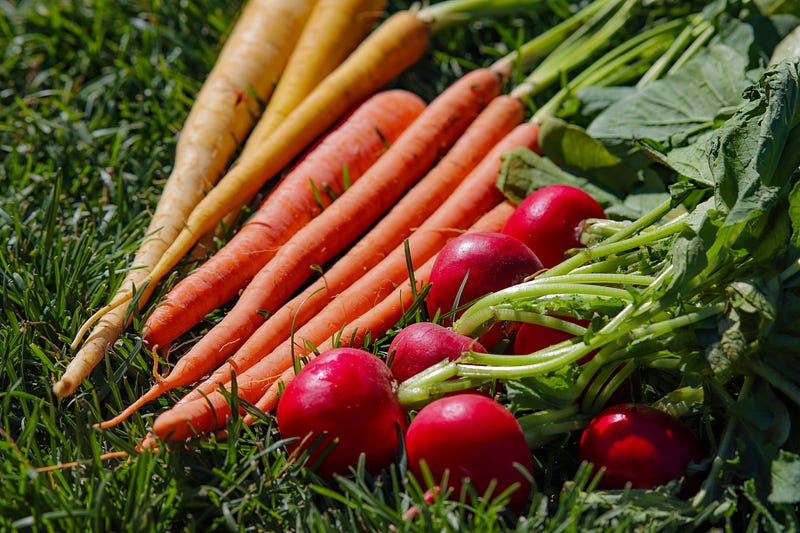Why Carrots Are Orange: The Domestication of Your Favorite Healthy Snack
By Jason M. Denoncourt, Chemical Engineering and Biochemistry, 2023

The common name for wild carrots is Queen Anne’s Lace. With its illustrious, white summer flowers and pale, branching root systems, this subspecies hardly resembles everyone’s favorite healthy snack. Yet, over numerous generations of human influence, wild carrots, essentially ornamental flowers, transformed into one of the most common vegetables in the world.
There are two types of root systems in plants: taproots and fibrous roots. While fibrous plants form a spider web of thin, spindly roots, taproots anchor plants deep in the soil with one primary root branching into thin strands. All carrots are a specific subcategory of taproot known as storage roots, which are reservoirs of starch and water. To increase yield and revenue, cultivated carrots have been selected for larger, starchier taproots. By breeding the plants with the thickest taproots and highest volume of starch together, scientists and farmers have transformed the carrot plant from a spindly network of roots to its characteristically dense, singular root.
Over numerous generations of human influence, wild carrots, essentially ornamental flowers, transformed into one of the most common vegetables in the world.
So, it is economically beneficial for farmers to artificially select for larger taproots. But, if carrots in nature are typically a pale, whitish color, what would be the benefit of selecting for the color orange?
The popularization of the orange carrot dates back to the Habsburg occupation of the Netherlands in the 16th century. William the Silent of the House of Orange-Nassau organized a Dutch revolt against Spanish imperial rule, resulting in the reclamation of half the nation’s territory. In tribute to the House of Orange-Nassau’s involvement in the war, the color orange became a symbol of royalty and freedom for the Dutch people. Even today, Dutch orange pride is still evident in parades, athletic competitions, cultural events, and even carrots.
Due to artificial selection over thousands of years, carrots have been transformed from an invasive, wild species into the vegetable we are all familiar with today.
Agricultural scientists had long been breeding deep yellow carrots together over numerous generations to create orange carrots. They were qualitatively selecting for what scientists today have identified as the chemical β-Carotene. In addition to its bright pigment, this chemical has substantial health benefits. Scientists today continue to select for β-Carotene for its nutritional content and distinctive orange color.
Due to artificial selection over thousands of years, carrots have been transformed from an invasive, wild species into the vegetable we are all familiar with today. Though the most significant genetic change of carrots took place in the Netherlands, scientists today continue to alter the genetic makeup of carrots, in search of that perfectly sweet, vivid orange crunch.